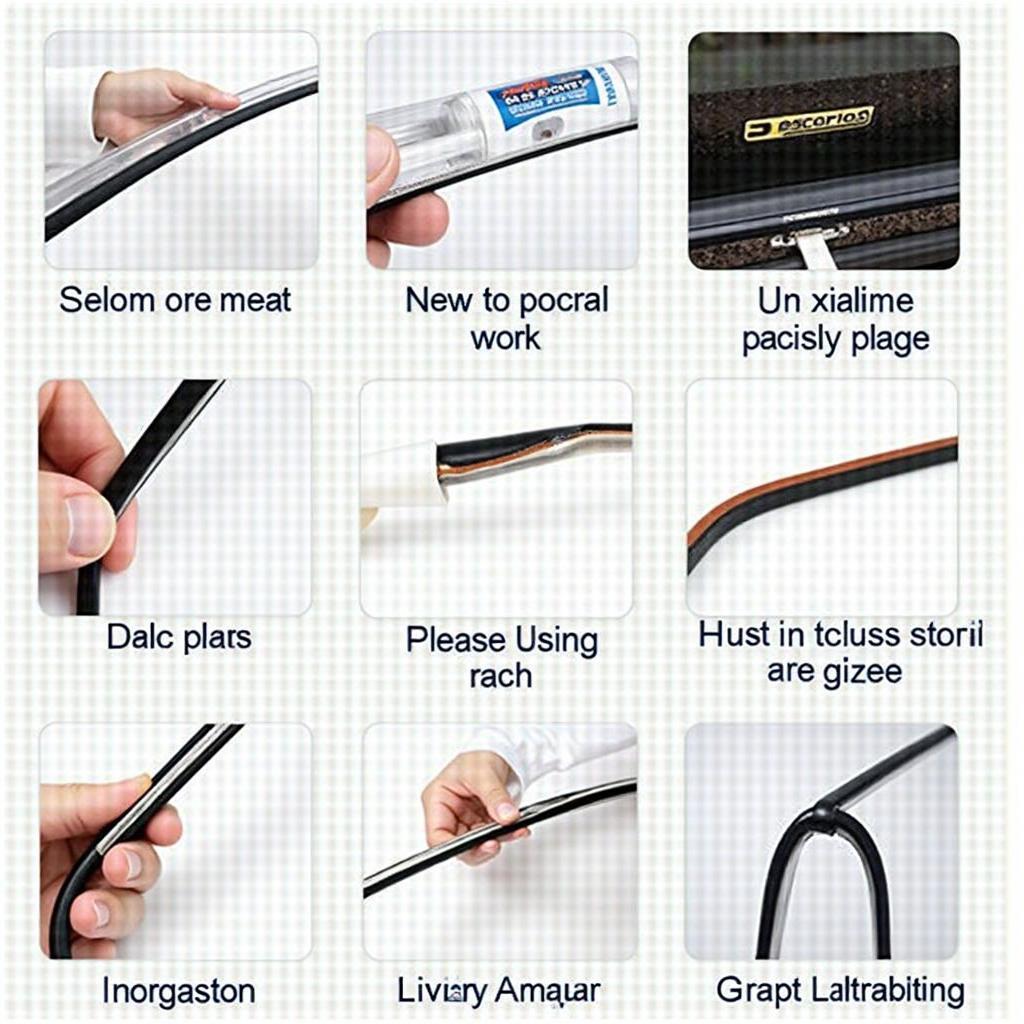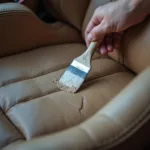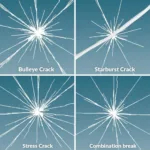Dealing with a leaky car window seal can be a frustrating experience. Not only is that annoying dripping sound a constant reminder, but water damage can lead to mold, mildew, and even electrical problems. Thankfully, repairing a car window seal is often a manageable DIY project. This comprehensive guide will walk you through everything you need to know about car window seal repair, from identifying the problem to choosing the right sealant and executing a successful fix.
Identifying the Source of the Leak
Before you grab your tools and sealant, it’s crucial to pinpoint the exact source of the leak. Water can be sneaky, and what seems like a window seal leak might stem from a different area entirely.
Here’s what to check:
- Window Seal: Carefully inspect the rubber seal around your car window. Look for cracks, tears, gaps, or any signs of damage or deterioration.
- Window Tracks: Dirt, debris, and leaves can accumulate in the window tracks, preventing the window from sealing correctly.
- Door Seal: Don’t forget to examine the seal around the entire door. A compromised door seal can also allow water to enter your vehicle.
- Sunroof/Moonroof: If your car is equipped with a sunroof or moonroof, check the seals around these areas as well.
Common Causes of Car Window Seal Damage
Understanding what can cause car window seal damage helps you address the root of the problem and potentially prevent future leaks. Common culprits include:
- Age: Over time, rubber seals naturally dry out, crack, and lose their flexibility, making them prone to leaks.
- Weather Exposure: Extreme temperatures, sunlight, and moisture can all take a toll on rubber seals, accelerating wear and tear.
- Improper Cleaning: Using harsh chemicals or abrasive materials to clean your car windows can damage the delicate rubber seals.
- Accidental Damage: Objects hitting the window, forcing it open, or even improper car washes can cause seal damage.
Choosing the Right Car Window Seal Repair Kit
Once you’ve identified the leak’s source and assessed the damage, it’s time to choose the right repair solution. For minor cracks and gaps, a car window seal repair kit can be a cost-effective and easy-to-use option.
When selecting a kit, consider these factors:
- Type of Sealant: Look for a high-quality sealant designed specifically for automotive window seals. Silicone-based sealants are popular for their durability and flexibility.
- Color Matching: Some repair kits offer color-matching options to help the repaired seal blend seamlessly with your car’s interior.
- Application Method: Kits may come with different applicators, such as brushes, nozzles, or tubes. Choose one that you find comfortable and easy to control.
Step-by-Step Guide to Repairing Your Car Window Seal
Repairing your car window seal yourself can be a satisfying and budget-friendly endeavor. Here’s a step-by-step guide to ensure a successful repair:
1. Gather Your Materials:
- Car window seal repair kit
- Cleaning solution (isopropyl alcohol or mild soap and water)
- Microfiber cloths
- Masking tape (optional)
- Gloves (optional)
2. Clean the Area:
Thoroughly clean the damaged area of the seal and the surrounding window surface with a cleaning solution. This removes dirt, debris, and any residues that could interfere with sealant adhesion.
3. Prepare the Sealant (if necessary):
Follow the instructions provided with your specific repair kit. Some sealants require mixing or have specific drying times.
4. Apply the Sealant:
Carefully apply the sealant to the damaged area of the seal. If using a kit with a nozzle, try to inject the sealant into any gaps or cracks. For surface repairs, use a brush or your finger (wearing a glove) to spread an even layer of sealant.
5. Smooth and Shape the Sealant:
Use a damp finger or a smooth tool (like a plastic spoon) to smooth out the sealant and create a seamless repair. If needed, use masking tape to protect surrounding areas and achieve cleaner lines.
6. Allow for Curing Time:
Let the sealant cure completely according to the manufacturer’s instructions. This may take a few hours or overnight, depending on the product.
7. Test the Repair:
Once the sealant is fully cured, gently test the repaired area by spraying water around the window. If you still notice leaks, you may need to repeat the process or consider seeking professional assistance.
When to Consult a Professional
While DIY car window seal repair can be effective for minor damage, some situations warrant professional intervention. Consider contacting a qualified auto glass technician if:
- Extensive Damage: If the damage to your window seal is extensive, involves multiple areas, or affects the structural integrity of the window, it’s best to leave it to the pros.
- Unsure of the Cause: If you’re unable to pinpoint the source of the leak or suspect a more complex issue, a professional can diagnose and address the problem accurately.
- Uncomfortable with DIY: If you’re not comfortable tackling the repair yourself or lack the necessary tools and experience, don’t hesitate to seek professional help.
Tips for Preventing Future Car Window Seal Leaks
Prevention is always better than cure! Here are some proactive measures you can take to protect your car window seals and prevent future leaks:
- Regular Cleaning: Clean your car window seals regularly using a mild soap and water solution or a dedicated rubber seal cleaner. Avoid harsh chemicals or abrasive materials.
- Conditioning Rubber Seals: Apply a rubber conditioner specifically designed for automotive use to keep your seals pliable and prevent drying, cracking, and fading.
- Careful Window Operation: Avoid forcing your windows open or closed if you encounter resistance. This can damage the seals and mechanisms.
- Professional Inspections: Consider having your car window seals inspected by a professional during routine maintenance checks to catch and address potential issues early on.
Conclusion
A leaky car window seal might seem like a minor annoyance, but it can quickly escalate into a bigger problem if left unaddressed. By understanding the causes, repair options, and preventive measures, you can keep your car’s interior dry, comfortable, and protected from potential water damage. Remember, whether you choose a DIY fix or seek professional assistance, a well-maintained car window seal is essential for a safe and enjoyable driving experience.



